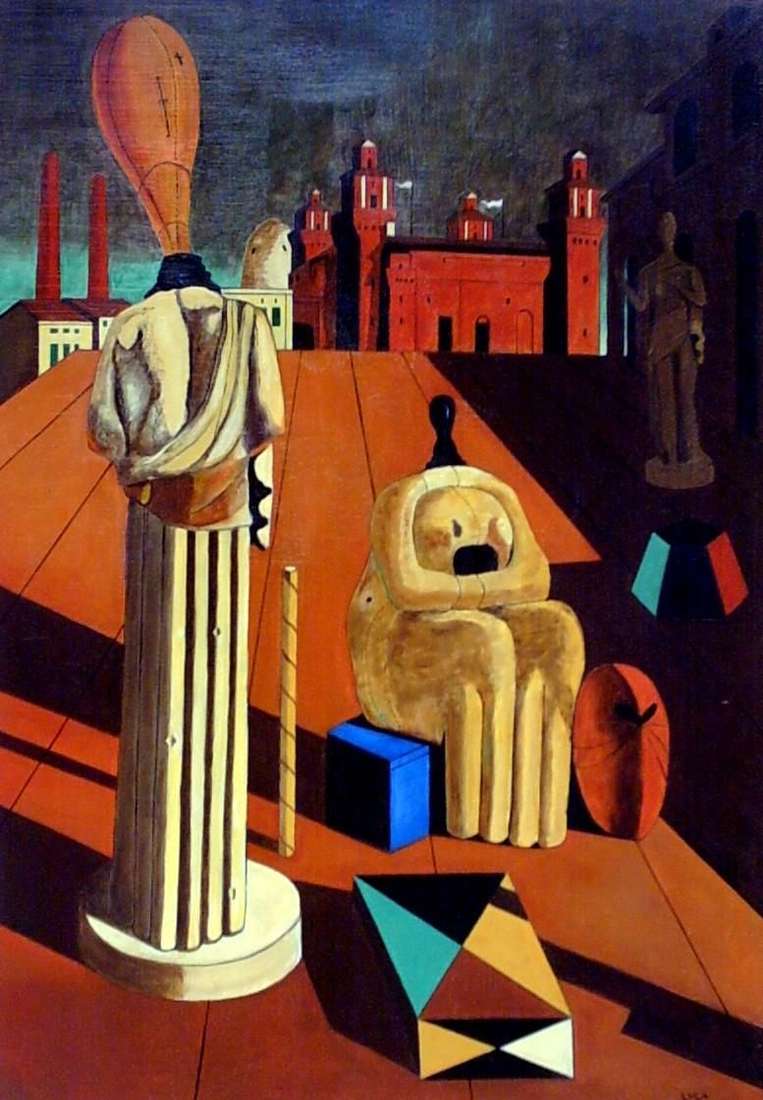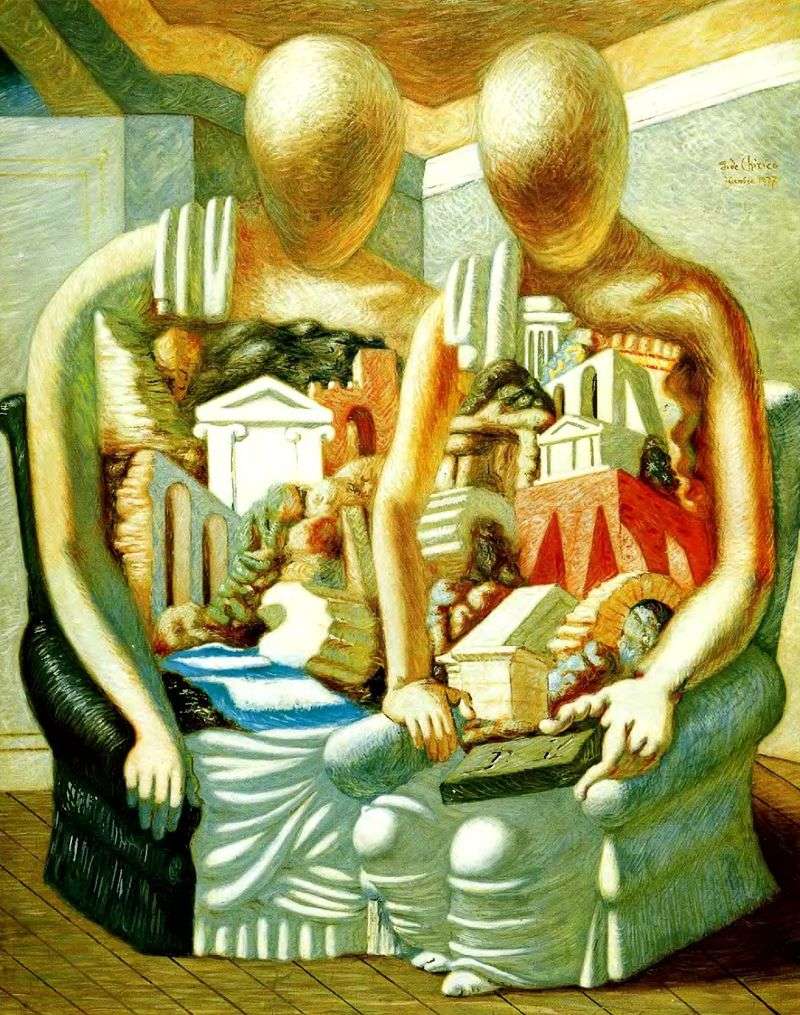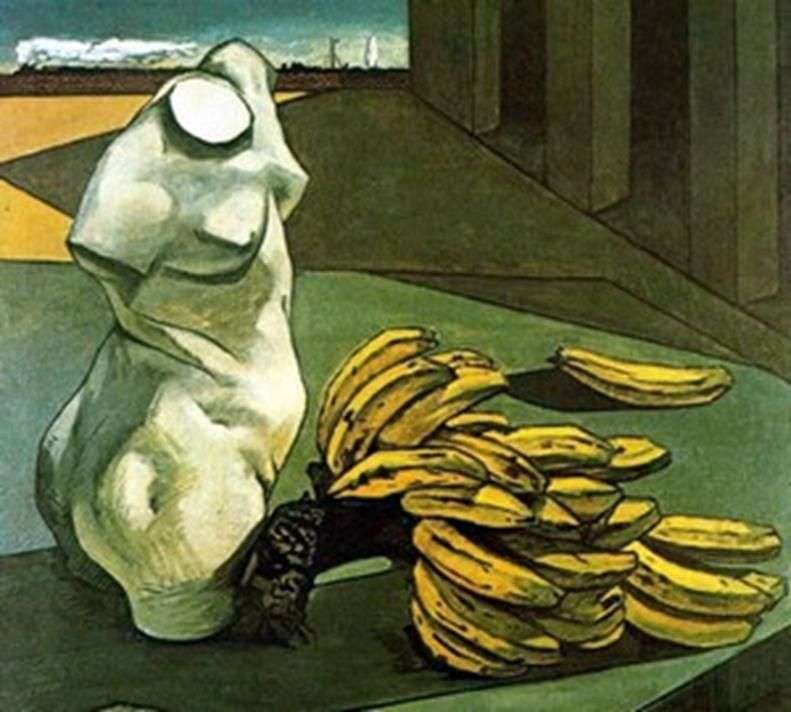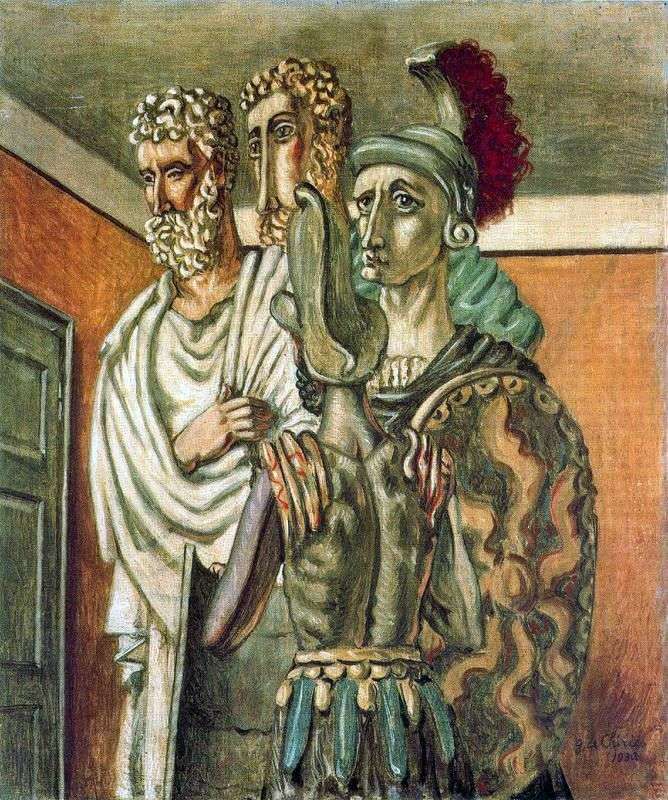
“Destruction of the Muses” is one of the most famous canvases by Giorgio de Chirico. It is also known under the names “Alarmed Maidens” and “Anxious Muse”. The first version of the picture appeared in 1917, after which the master created more than two dozen slightly different versions of this work.
The architecture of the composition is very simple and expressive. On a long platform, which is shown in the perspective, a broad, like a ship’s deck, there are two figures in ash loops, draped with folds, reminiscent of ancient sculptures. The one on the left has an elongated head of a dummy, resembling a dirigible swinging in the wind. Sitting on the right has lost her head – she is lying at her feet, and in her place sticks out something like a shiny bowling pin.
Next to these two figures, or the statues, the master placed two multicolored polyhedrons and one thin cylinder decorated with a red spiral and looking like a fairy candy. The wooden podium abruptly breaks off in the background. There you can see the “red city” – the family castle of d’Este in Ferrara, the factory buildings with tall pipes, the squat white tower. Two central images are represented by Vestalis guarding Ferrara and embodying the rebellious spirit of this city.
In the shadows in the background there is a female statue – most likely it is a statue of Hestia, the Greek goddess, the patroness of the hearth. The artist has figures on the diagonal, perpendicular to the line of shadows cast by them. Numerous vertical lines that form and organize the composition are contrasted with the horizon line, indicated by the edge of the platform. De Chirico skillfully uses his excellent knowledge of the classical perspective in order to create the illusion of perspective construction in his works.
The combination of several points of view, the clash of unexpected angles, the dismemberment of the composition into zones, each of which has its own horizon – these are some of the techniques used by the artist to build his own, unique metaphysical space. The mysterious nature of what is happening on the canvas is enhanced by the clear and cool atmosphere that reigns in its space. The artist masterfully confronts the archaic character of statues-sculptures and baroque theatricality of the surrounding mise-en-scene. This opposition strengthens the monumentality of the canvas.
Inspiration in the work on key images de Chirico draws from several sources. The standing figure resembles a marble statue from the sanctuary of Hera Samos, it is similar to the bronze Apollo of Delphi. These sculptures the artist “borrowed” the drawing of folds on tunics. The sitting figure, it seems, is inspired by Sumerian statues from the collection of the Louvre – it is their hands that are so composed. “I can not imagine art in any other way: the thought must come off what we call logic and meaning, get rid of all human attachments, to see objects from a new angle, to highlight their previously unknown features.” Giorgio de Chirico
 La destruction des muses – Giorgio de Chirico
La destruction des muses – Giorgio de Chirico Italian squares in the paintings by Giorgio de Chirico
Italian squares in the paintings by Giorgio de Chirico Archaeological cycle by Giorgio de Chirico
Archaeological cycle by Giorgio de Chirico Walk of the philosopher by Giorgio de Chirico
Walk of the philosopher by Giorgio de Chirico Red Tower by Giorgio de Chirico
Red Tower by Giorgio de Chirico Uncertainty of the poet by Giorgio de Chirico
Uncertainty of the poet by Giorgio de Chirico The Prodigal Son by Giorgio de Chirico
The Prodigal Son by Giorgio de Chirico Classic figures in the room by Giorgio de Chirico
Classic figures in the room by Giorgio de Chirico